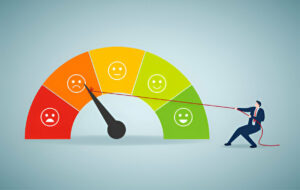Have you ever pondered why you might be feeling so lethargic without any visible reasons? Or maybe your bones hurt in such a way that it feels…off? It could be that you are not just fatigued. You could be low on vitamin D-that D sunshine nutrient that most people don’t even bother thinking about. But the fact is, the symptoms of vitamin D deficiency are sneakier than you’d think-and are much more common as well.
So let’s dive in and learn what vitamin D is all about, what it means without thigh-high levels, and those weird signs of vitamin D deficiency no one ever talks about.
What Does Vitamin D Do anyway?
Righty-ho, so before we all start talking about the symptoms and dangers, let’s just put things on hold for a sec and see what really vitamin D does.
This little power should help your body:
- Absorb calcium, which is vital for bones and teeth.
- Supports immune function (funnily enough, this can help).
- Dealing with inflammation (in fact, it fights behind the scenes).
- Boost mood (sunsheene: hence, sunshine vitamin).
- Power regulation (really important for those watching their blood sugar levels).

So if one shrinks vitamin D, everything in the body gets locked like a car trying to run without oil-then slowly starts breaking down.
What Are the Symptoms of Vitamin D Deficiency?
Here is where it gets wild. Though many don’t realize that they’re deficient. Unfortunately, this isn’t it because the symptoms are scattered into all areas. Some can be obvious, while others are just plain weird.
Common Symptoms of Vitamin D Deficiency:
- Fatigue no matter how much rest you get.
- Bone pain, together with a dull ache in lower back and joints.
- Muscle weakness makes it feel like Mount Everest going up stairs.
- Frequent illnesses like cold, flu, and any kind of infection.
- Mood changes or straight-out depression.
- Wounds being slow to heal-why is that small cut still red up to now?
- Hair loss-yes, vitamin D might be ghosting your follicles.

Weird Symptoms of Vitamin D Deficiency:
These are the ones that will make you say, “Wait…what?!”
- Head sweats for no dang reason- even if it’s not hot.
- Numbness in hands or feet with prickly pins and needles.
- Gut complaints, such as bloating or cramping, without explanation.
- Tinnitus, or ringing in ears.
- Legs that feel restless when trying to sleep.
- Unexplained feelings of anxiety or panic.
Vitamin D deficiency symptoms really do pack their sneaky little sucker punches, huh?
Dangerous Not to Have Sufficient Vitamin D
Well, for one thing, it doesn’t feel good all by itself. It could be something serious if you neglect it. We’re talking about long-term stuff here.
Chronic health risks:
- Osteoporotic and bone fractures. Without vitamin d, calcium will not be absorbed properly.
- Auto Imune Diseases. Low D has been associated with many diseases like MS and rheumatoid arthritis.
- Heart disease. Some studies show that low D can contribute to the risk for hypertension and heart failure.
- Two types of diabetes. Because vitamin D influences the regulation of insulin.
- Cognitive decline. Memory loss, and even dementia.
Know when you are deficient
You don’t know whether you are about to get a blood test. Your physician will check your type of 25-hydroxyvitamin D levels.
Here is a little chart telling it like it is.
| Vitamin D Level | Status |
|---|---|
| Below 20 ng/mL | Deficient (not good) |
| 20-30 ng/mL | Insufficient (getting there) |
| 30-60 ng/mL | Normal (you’re golden) |
| Above 60 ng/mL | High (but usually okay) |
Pro tip: Always check with a doc before popping high doses.
Vitamin D: Where does it come from?
Now is the time to get it right. This is a way to fill yourself up with the good stuff.
Sources of vitamin D:
- Sunshine: Your skin will be producing it naturally under the influence of sunlight.
- Fatty fishes: salmon, mackerel, sardines.
- Egg yolks: Yes, do not skip the yellow part.
- Fortified foods Food items such as milk, cereal, and even orange juice.
- Supplements – If diet and exposure to the sun are not sufficient.

Daily Requirement of Vitamin-D:
Depends on one’s age, lifestyle, and how much sun one enjoys. But, here’s a general breakdown:
| Age Group | Recommended Daily Amount (IU) |
|---|
| Babies | 400 IU |
| Teens & Adults | 600-800 IU |
| Seniors | 800-1000 IU |
Heads up: If you’re severely deficient, your doc may suggest up to 5000 IU daily for a short while.
What Things Will Increase Your Risk for a Deficiency?
There are many reasons why someone may be deficient in vitamin D, some of which you can change, and others you cannot.
- Living in a place with little sunshine (winter blues).
- Having darker skin (melanin blocks D’s absorption).
- Wearing sunscreen all the time (great for the skin, not so great for D).
- Being overweight (vitamin D is stored in fat).
- Gut issues such as Crohn’s or celiac (affect absorption).
Bust Some Myths About Vitamin D
-
Myth: You only need it in winter.
-
Truth: You can be low in summer too, especially if you avoid sun.
-
-
Myth: Only old people get deficient.
-
Truth: Young adults, teens, even kids can be low.
-
-
Myth: You don’t need supplements if you eat well.
-
Truth: Diet alone usually doesn’t cut it, unless you’re eating fish every day.
-
Vitamin D Deficiency FAQs
Is it possible to feel tired all day due to a lack of vitamin D?
Sure. Wrecks all sorts of havoc in your energy levels.
Is it poisonous to take overdose in vitamin D?
Yes. Overdose will give you an upset stomach, damaged kidneys, and calcium build-up. Always heed your doctor’s advice.
Does vitamin D help with anxiety and depression?
Some studies indicate yes. Not a miracle cure, but it can definitely help to stabilize your mood.
How long can it fix a deficiency?
Depends on how low you are in value. Time can vary from a few weeks to a few months after getting the right dose.
Can I get vitamin D just from food?
Really? Probably not. Unless you’re consuming ample amounts of fatty fish every day, most individuals require sunlight and/or a supplement.
The Bottom Line
You feel a little off, exhausted, cranky, achy, or just not like yourself—and can’t put a finger on why. It’s worth paying attention to because something may be a symptom of a deficiency—the damage done over time can be deep and real.
Good news, too. It’s one of the easiest things to get back into line. A little sunshine, a clever supplement, maybe a few more egg yolks or more salmon dinners-and boom. You’re back to feeling good again.
Go ahead. Get tested. Take your vitamins. And feel like you again.
Sources & References
-
NIH – Vitamin D Fact Sheet for Consumers – April 2024
-
Cleveland Clinic – Vitamin D Deficiency – March 2024
-
Harvard T.H. Chan School of Public Health – Vitamin D – February 2024
-
Mayo Clinic – Vitamin D – January 2024
